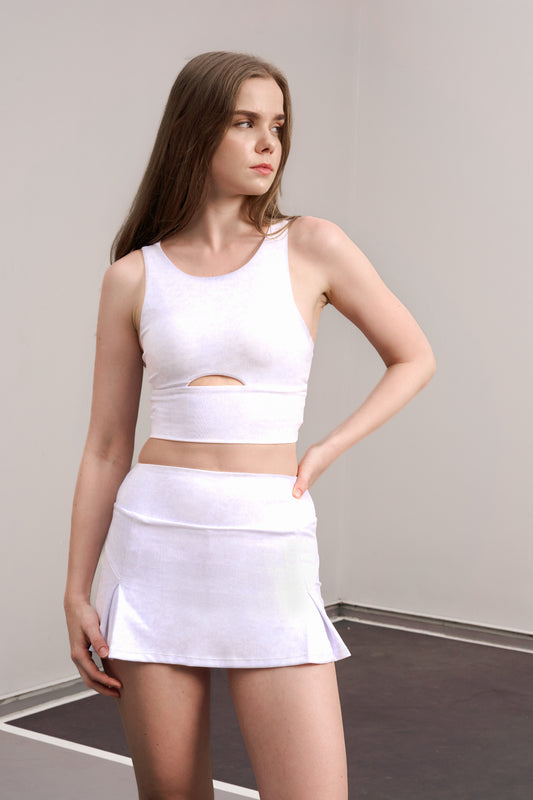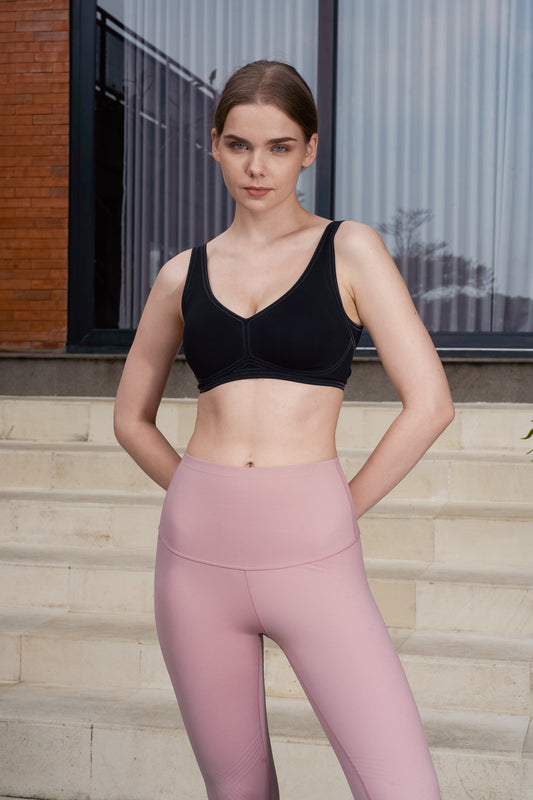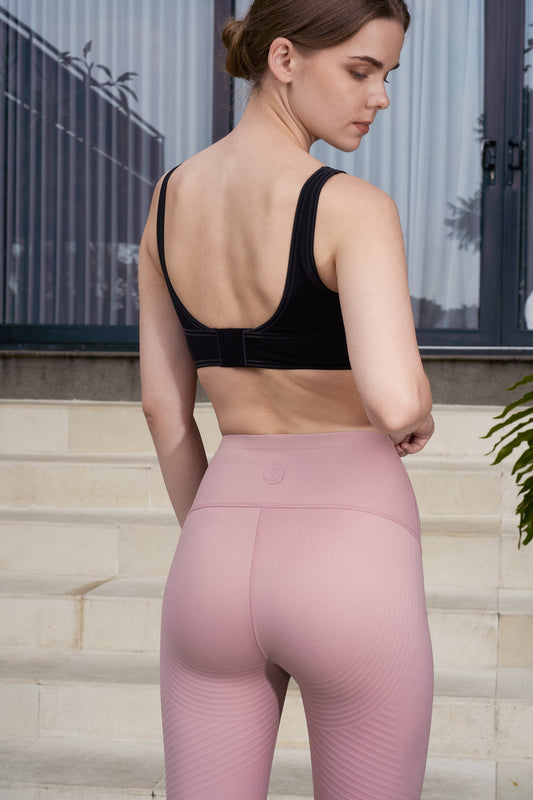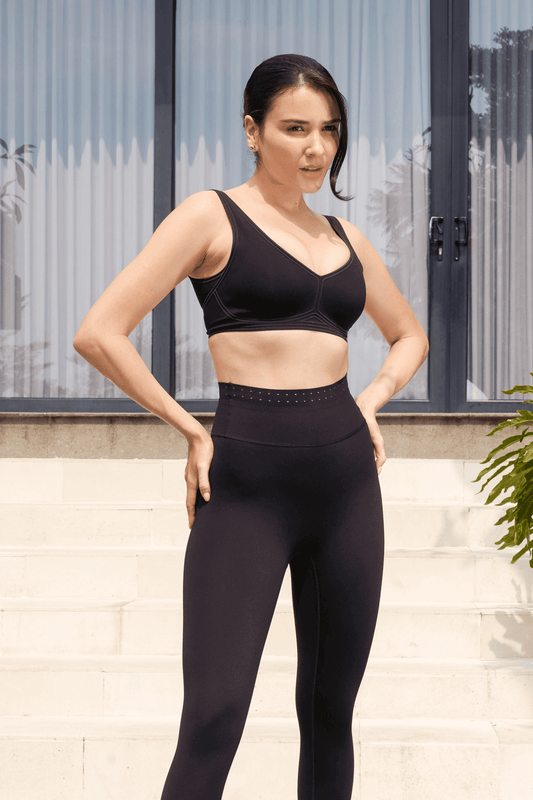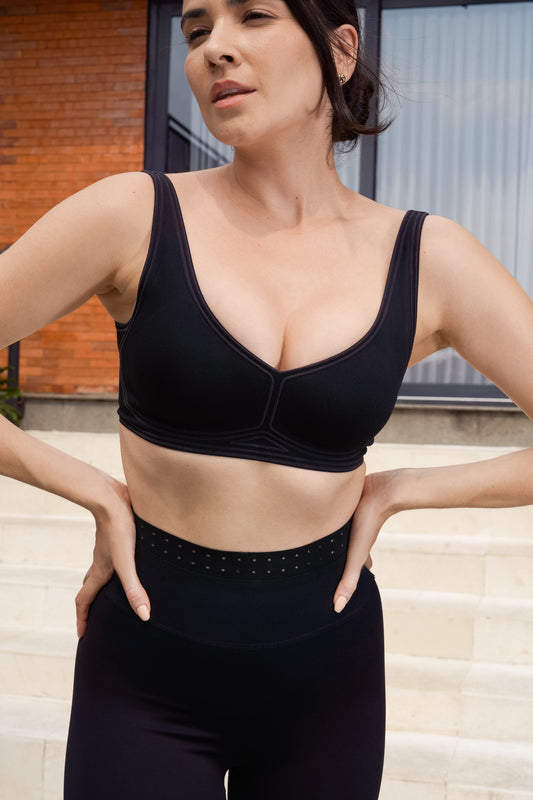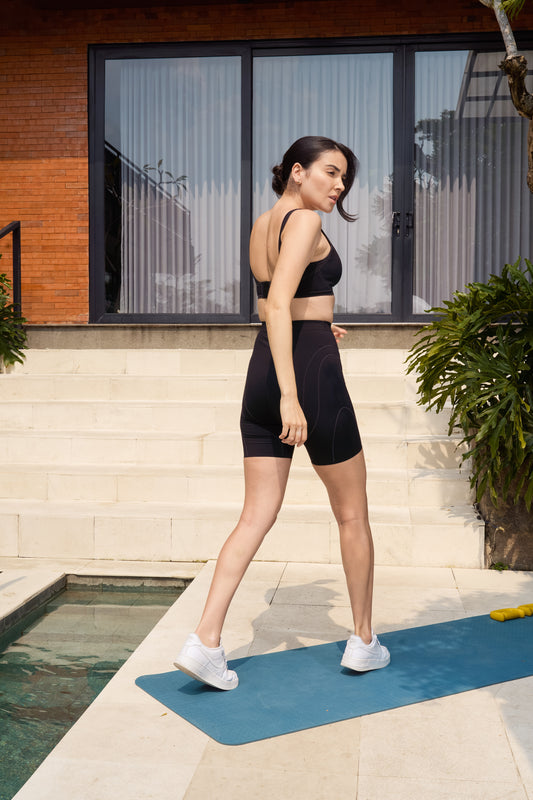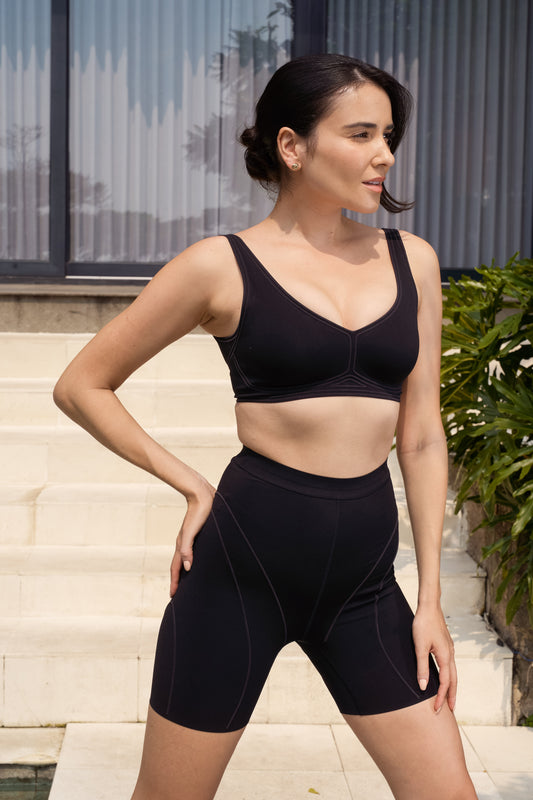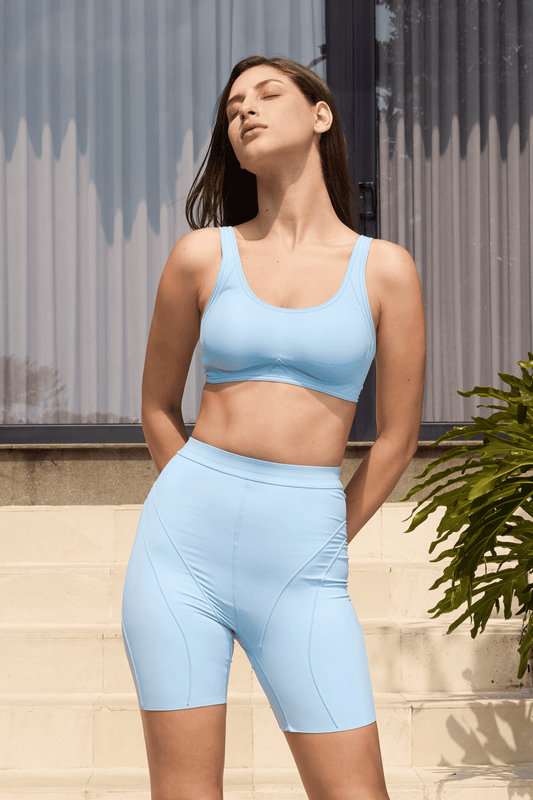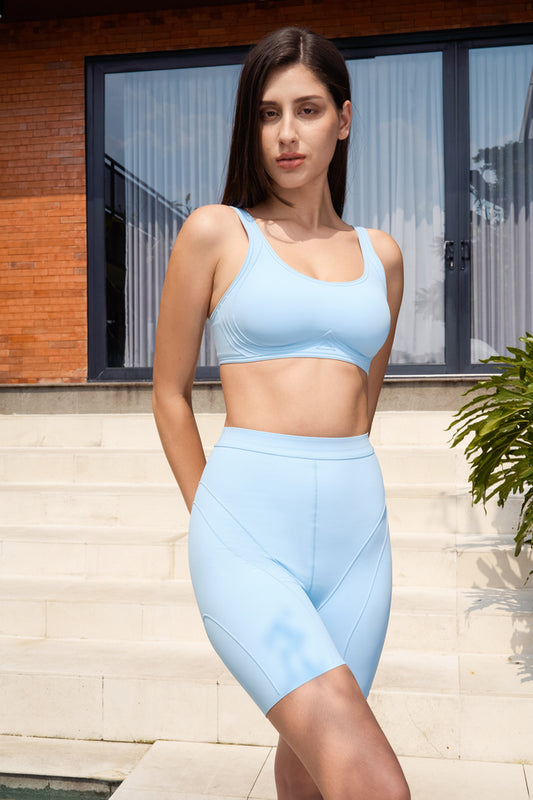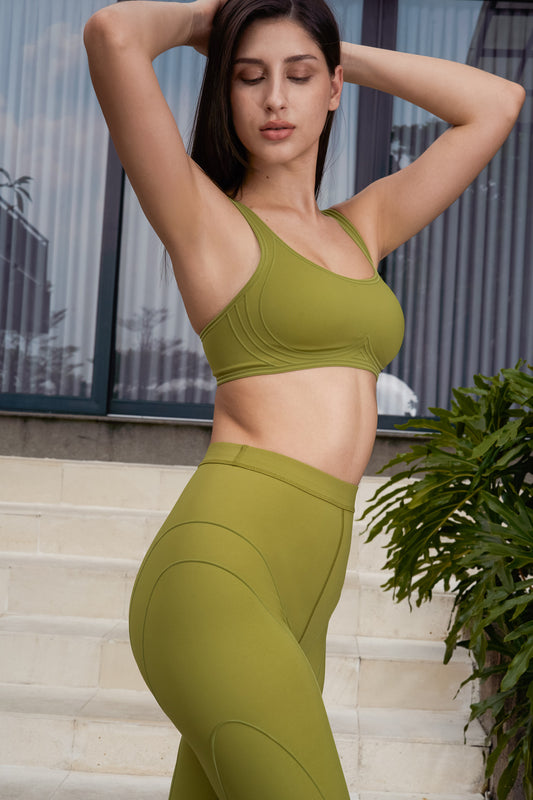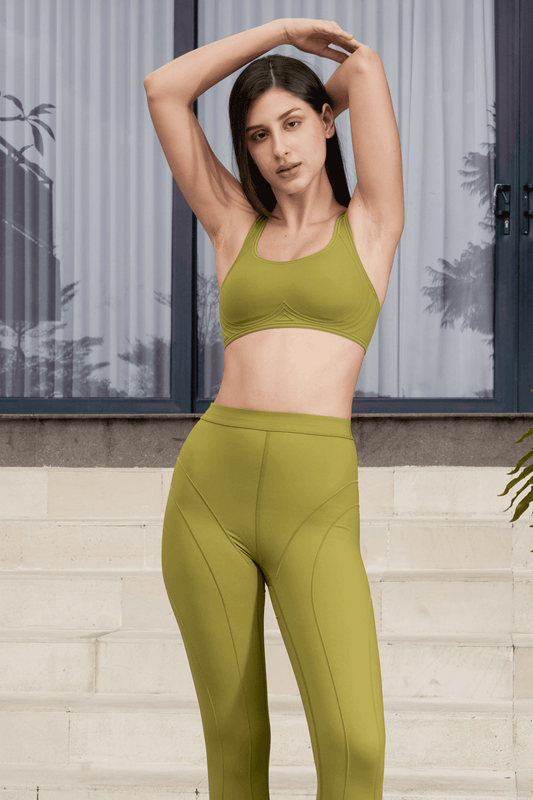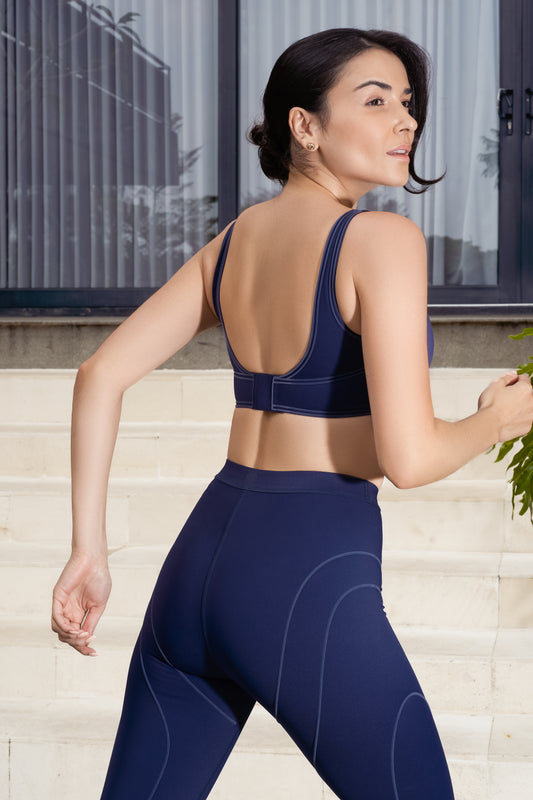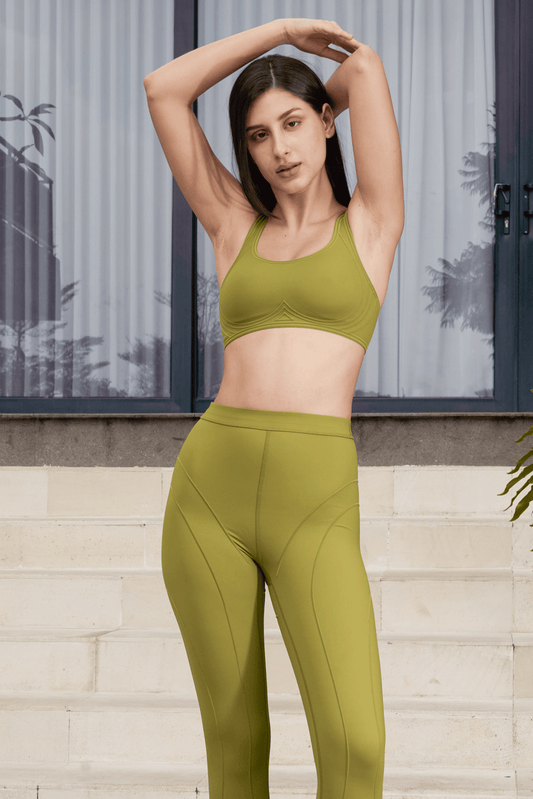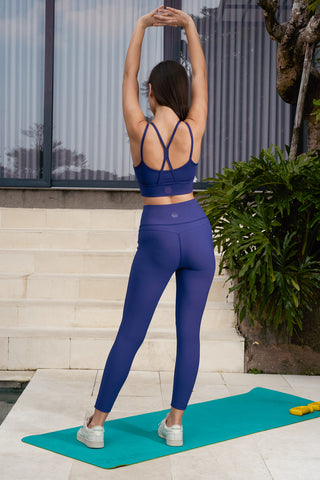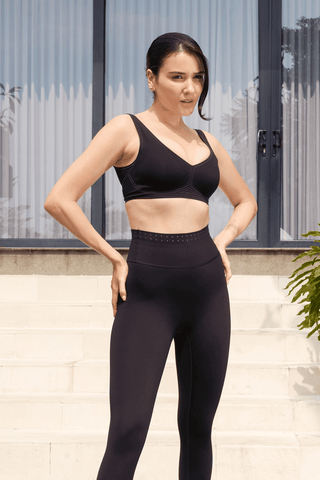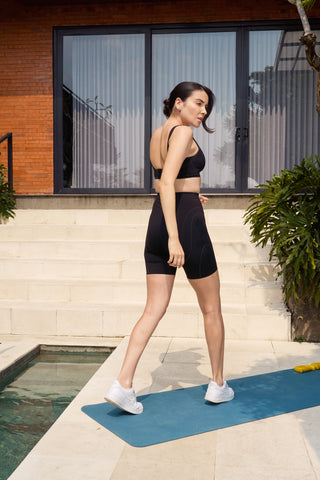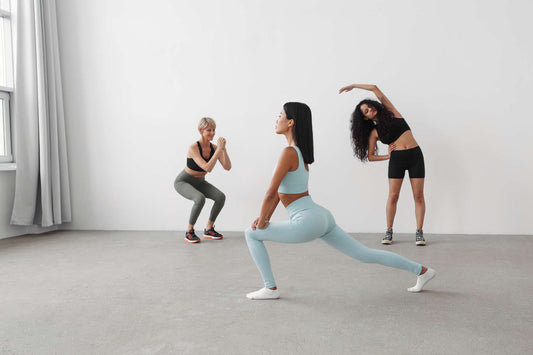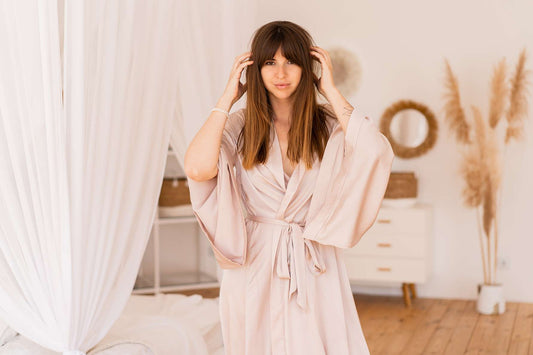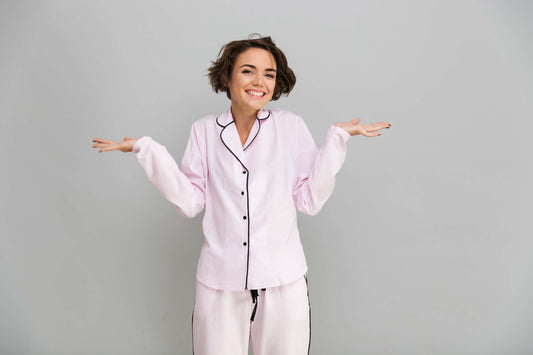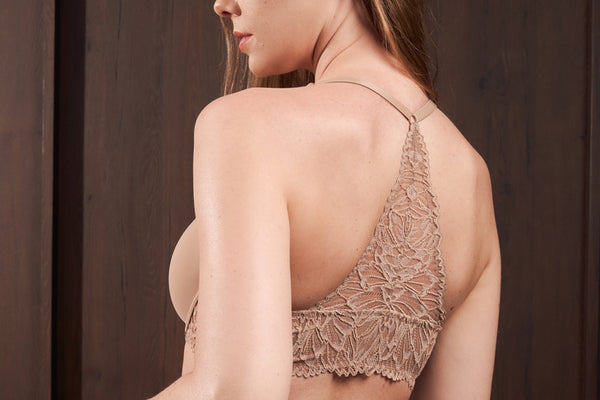Table of Content
Pilates is everywhere these days—and for good reason! This feel-good workout is all about strength, flexibility, and mindful movement. Whether you’re totally new or already a Pilates pro, there’s one question that always pops up: what should I wear to class?
It might sound like a small thing, but trust us—your outfit can make a huge difference. The right gear helps you move freely, feel confident, and stay comfy through every stretch and core move.
In this article, we’ll break down what Pilates is all about, why people love it, and what to wear to make the most of your workout. You’ll also get expert tips and must-have outfit recommendations from Diana Intimates, the go-to brand for activewear that’s stylish, super comfy, and made to move with you!
What is Pilates?
Pilates is a low-impact form of exercise focused on improving flexibility, strength, and body awareness through controlled movements. It was developed in the early 20th century by Joseph Pilates and is best known for targeting the core muscles while also strengthening the entire body.
There are two main types of Pilates: Mat Pilates, which is done on a yoga-style mat on the floor, and Reformer Pilates, which uses a specialized machine with a sliding platform, springs, and pulleys to add resistance.
Both styles focus on slow, controlled movements and proper breathing to enhance posture, alignment, and overall body stability.
Benefits of Doing Pilates
Pilates is loved by people of all ages and fitness levels. Here are some of its key benefits:
- Core Strength
It builds deep abdominal and back muscles, leading to better balance and posture.
- Improved Flexibility
Regular practice helps lengthen muscles and increase range of motion.
- Better Posture
It helps align the spine and encourages proper movement patterns.
- Mind-Body Connection
The controlled breathing and focus during Pilates help you become more in tune with your body.
- Low-Impact Exercise
It’s gentle on the joints while still being effective, making it great for injury prevention and rehabilitation.
What to Wear to a Pilates Class
Now that you know how beneficial Pilates can be, let’s talk about what to wear. Since Pilates involves plenty of stretching, core engagement, and full-body movement, your outfit should be flexible to allow unrestricted motion.
It’s also best to avoid accessories like zippers or buttons that could dig into your back or damage the Pilates equipment. Here’s what to wear to Pilates class:
1. Pilates Tops
Wear a fitted tank top or T-shirt made from breathable, stretchable fabric. A top that stays in place as you move is ideal, so you don’t have to adjust it constantly during class.
Try Diana’s Classic Fashionable Crop Top. It offers light support, hugs your body without feeling restrictive, and allows full range of motion during stretches and twists.
2. Sports Bras
Even though Pilates is low-impact, a comfortable sports bra is still important, especially in mat-based workouts where you’re moving from seated to supine positions.
Choose one with medium support, good stretch, and soft materials. The Diana Intimates Light Supports Sports Bra is perfect for Pilates. It’s supportive enough without feeling bulky, and the wide band ensures it stays put throughout your session.
3. Pilates Bottoms
Leggings or bike shorts are the most common bottom wear for Pilates. They should be high-waisted (for added core support), stretchy, and not see-through. Aim for full-length or capri leggings that allow easy movement without bunching up.
If you’re doing Reformer Pilates, longer leggings help avoid skin contact with the machine for hygiene and comfort.
Go for the Diana High Waisted Basic Leggings, they contour the body, offer light compression to support your core, and are made with soft, sweat-wicking material that keeps you cool and dry. For those of you who don’t like leggings, you can use running short liners during Pilates.
4. Socks or Barefoot?
Most Pilates studios recommend practicing barefoot or with grip socks. Bare feet help you connect with the floor and activate the right muscles. But grip socks (with rubber dots on the sole) are great for hygiene and prevent slipping on studio floors or equipment.
5. Outerwear
Before or after class, you might want to layer up with a light hoodie or zip-up jacket, especially if you’re in a cool studio. Choose something easy to remove and not too bulky.
What Not to Wear to Pilates
Knowing what not to wear to Pilates is just as important as knowing what to wear — especially when it comes to safety, comfort, and getting the most out of your practice. Here’s a guide on what to avoid when dressing for your Pilates class:
1. Avoid Loose or Oversized Clothing
While it might be tempting to throw on a loose t-shirt or baggy sweatpants for comfort, oversized clothing is actually a big no-no in Pilates. Since Pilates focuses on posture, alignment, and controlled movement, instructors need to see your body’s form clearly to help guide you.
When your clothes are too loose, they can hide your posture and make it difficult for your instructor to correct your technique. Plus, baggy fabric can ride up or shift around during exercises, leading to distractions or even safety hazards, especially on equipment like the reformer.
Stick to form-fitting workout clothes like leggings and snug tops that move with your body and allow you to focus fully on your practice.
2. Skip Clothing with Zippers, Buttons, or Drawstrings
As functional as zippers, buttons, and drawstrings may seem, they’re best left out of your Pilates wardrobe. These features can press uncomfortably into your skin when you’re lying on your back or rolling. Worse, they can scratch or damage the delicate surfaces of Pilates equipment.
Drawstrings may also get caught in moving parts of machines, which can be dangerous. Instead, go for smooth, zipper-free activewear with wide, soft waistbands that won’t dig in or cause discomfort. Seamless leggings and simple tops are much better options that help you move freely and safely.
3. Leave Jewelry and Accessories at Home
Wearing jewelry during Pilates might seem harmless, but it can actually interfere with your workout. Long necklaces, bracelets, dangling earrings, and large rings can get caught in clothing or equipment, creating both a safety hazard and a source of discomfort.
Jewelry can also dig into your skin during floor exercises or restrict your movement in ways you might not expect. To stay comfortable and safe, it’s best to remove all accessories before class.
If you want to wear something, stick to minimal pieces like stud earrings or a simple fitness tracker that won’t get in the way.
4. Avoid Wearing Regular Socks
Not all socks are created equal when it comes to Pilates. Regular socks may feel cozy, but they often lack the grip needed to keep you steady on a mat or machine.
Since Pilates involves a lot of balance and controlled movement, wearing slippery socks can cause you to slide around, which not only disrupts your focus but can also lead to injury.
That’s why it’s important to invest in a pair of grip socks, which are designed with rubberized soles to help keep your feet in place. Many also feature toe separation and arch support for added comfort and control, making them the perfect fit for your workout.
What Do You Usually Wear to Pilates?
We hope this article serves as a helpful activewear buying guide for anyone looking to choose the right activewear products for their Pilates class. Wearing the right outfit can truly enhance your experience.
If you’re currently shopping for high-quality activewear, check out Diana Intimates—a brand known for its premium yet affordable products that anyone can enjoy.
Each piece is crafted with care, going through a detailed production process and strict quality control to ensure comfort, function, and style. For those specifically looking for the perfect pair of activewear shorts for Pilates, head over to Diana Intimates’ Activewear Shorts Collection to explore more!
FAQ
Can I wear yoga clothes to Pilates?
Yes! Yoga and Pilates clothes are quite similar—both require stretchy, form-fitting, and breathable outfits. Just make sure the pieces are comfortable and stay in place during movement.
Do I need shoes for Pilates?
No, Pilates is typically done barefoot or with grip socks. Avoid regular socks as they can make you slip.
Is it okay to wear shorts to Pilates?
You can, but make sure they’re fitted and long enough to avoid discomfort during exercises. Loose or short shorts can ride up and distract you.
